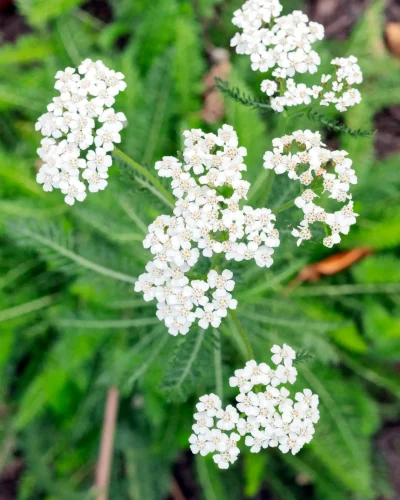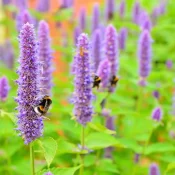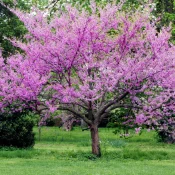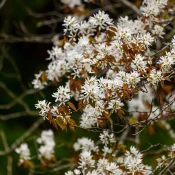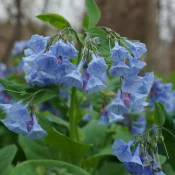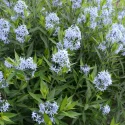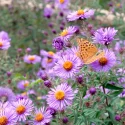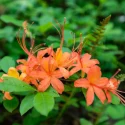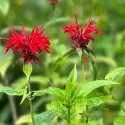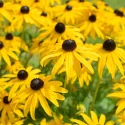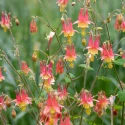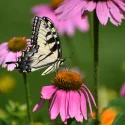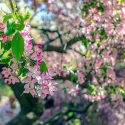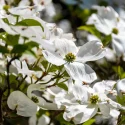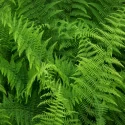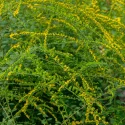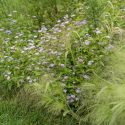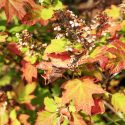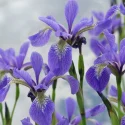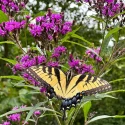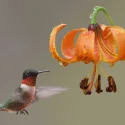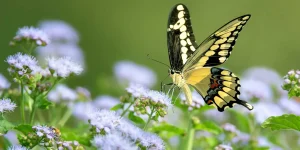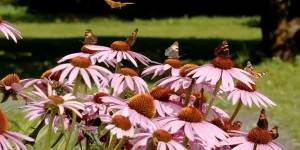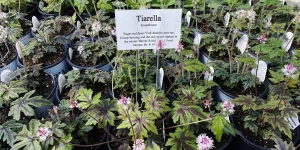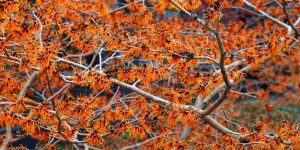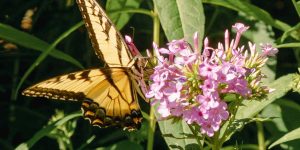How to Grow a Food Forest: Owen Lambert on Edible Native Plants
There are thousands of native plants in the Mid-Atlantic region—so where do you even start? One idea: grow your own food forest. At Temple University’s Ambler Arboretum, Owen Lambert has turned a patch of campus into a native edible ecosystem (and teaching garden). We caught up with him to talk about how it came together, the plants he’s most excited about, and why you don’t need to be an expert to start your own mini food forest at home.

Thanks for the time, Owen! Let’s briefly touch on how you got started with native plants. Can you tell us a bit about yourself and your background?
Yeah, of course. I got into gardening/ecology in early 2022 when my friend let me know about a student gardener position at Temple University’s Ambler Arboretum. After working there for a summer, I started to become interested in identifying plants and picking out what makes them unique. I expanded this interest into ecology once I landed an internship at the Upper Dublin Parks and Recreation Department as an Environmental Resource intern. As a part of the internship I got to work in forest regeneration through invasive species control. I was able to see how plants work together and the importance of stewarding our natural lands.
On one occasion, the Natural Resource Manager took me to a small stretch of township owned forested land. The forest had swaths of tall beech trees with rhododendrons beneath. Seeing such a beautiful forest in a suburbanized area made me fall in love with what native species can do.
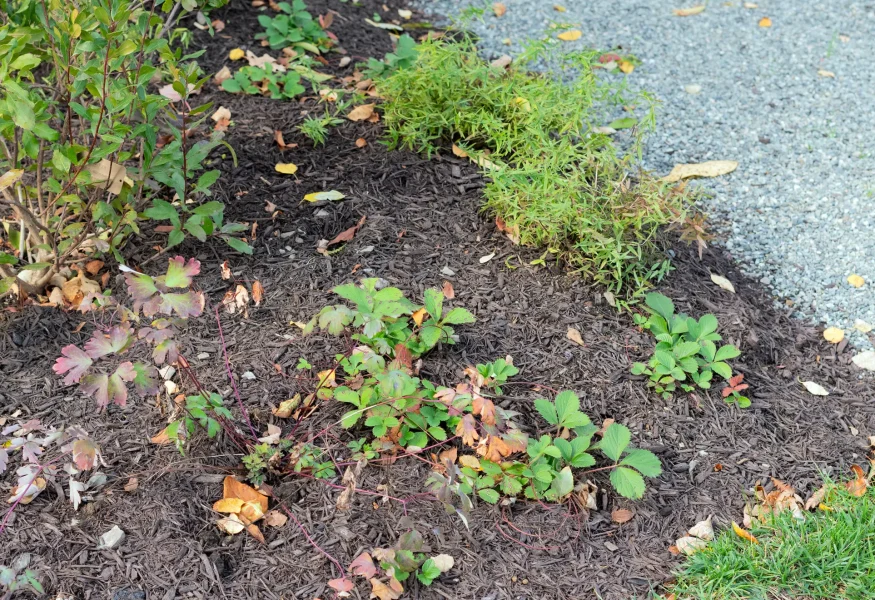
For those who might not know, what is a food forest?
A food forest is a permaculture-based ecosystem designed to mimic a natural forest but with a focus on edible plants. A food forest produces food through diverse plants like trees, shrubs, vines, groundcovers, and root crops arranged in vertical layers.
Can you walk us through what’s growing in your food forest at the Ambler Arboretum?
The food forest currently has seven sections, divided up mostly based on the edible part of the plant or the type of ecosystem the plant inhabits. These sections are:
- Pollinator Bend: native flowering, herbaceous plants
- Cherry Corner: plums and other sandy soil-loving plants
- Berry Beach: blueberries, bayberries, strawberries, and juneberries
- Oasis Orchard: strong fruit-producing trees like apples and persimmons
- Nut Canopy: nut-producing trees/shrubs
- Flower Power: plants with edible flowers
- Bark Park: plants with edible bark/twigs
I’m excited for people to learn more about what parts of a plant can be edible and see the diversity of species that have those traits.

Wow, Owen—I had no idea some bark was edible! Or that there was a native persimmon!
How did you decide what to plant? Was it based on regional ecology, food value, or something else?
Deciding what to plant was divided between woody species and herbaceous species.
What’s the difference between woody and herbaceous plants?
Herbaceous species are vascular plants that have no secondary growth above ground. They often have green, flexible stems that die back to the ground each year.
Woody species—like trees and shrubs—are vascular plants with secondary growth above the ground. They retain their structure year after year.
Got it! How did you pick woody plants for the food forest?
The woody species we chose are mostly native to the mid-Atlantic region, and also possess strong drought and pest resistance.
We then narrowed down these herbaceous species into ones that were pollinator-friendly, nitrogen-fixing, and strongly aromatic to ward off deer. These combinations made the food forest one whole self-sustaining ecosystem.
How about the herbaceous plants?
For herbaceous species, we first picked out plants based on their deer resistance. We based their deer resistance mostly on what we’ve seen deer eat and not eat here at the Ambler Arboretum, while factoring in the knowledge of college extension websites like the Penn State Extension. We then narrowed down these herbaceous species into ones that were pollinator-friendly, nitrogen-fixing, and strongly aromatic to ward off deer. These combinations made the food forest one whole self-sustaining ecosystem.
You already mentioned how you looked for deer-resistant plants. How do you manage other pests or invasive species?
We manage invasive species through a dense mulch and the use of groundcovers, which will shade out any invasives trying to come up. If ones do pop through, we will either mechanically remove them or cut any flower stalks to prevent them from seeding.
When it comes to pests, we manage them through our plantings, which promote many native beneficial insects to thrive in the environment and mow down any pest populations, and by keeping a breathable area around each of our shrubs and trees.
What are a few native plants that surprise people when they find out they’re edible?
Some cool edible native plants that can surprise people are the eastern prickly pear (Opuntia humifusa), pines (Pinus), and sweetfern (Comptonia peregrina).
What’s one edible native plant you wish more people knew about (and why)?
I believe bayberries (Myrica pensylvanica) are such an underrated edible plant! They’re found in swampy woods around the coast of beaches, bogs, and headlands, making them possess a very unique ecosystem compared to other typical edible species. They even look the part for their ecosystem with their wavy and evergreen leaves.
When it comes to edibility, bayberries have edible bay-like leaves that can be added to teas and stews. While their fruits can be used to make candles and soap. Plant a male and female bayberry, as they are dioecious and need two of the opposite sex to produce fruit.
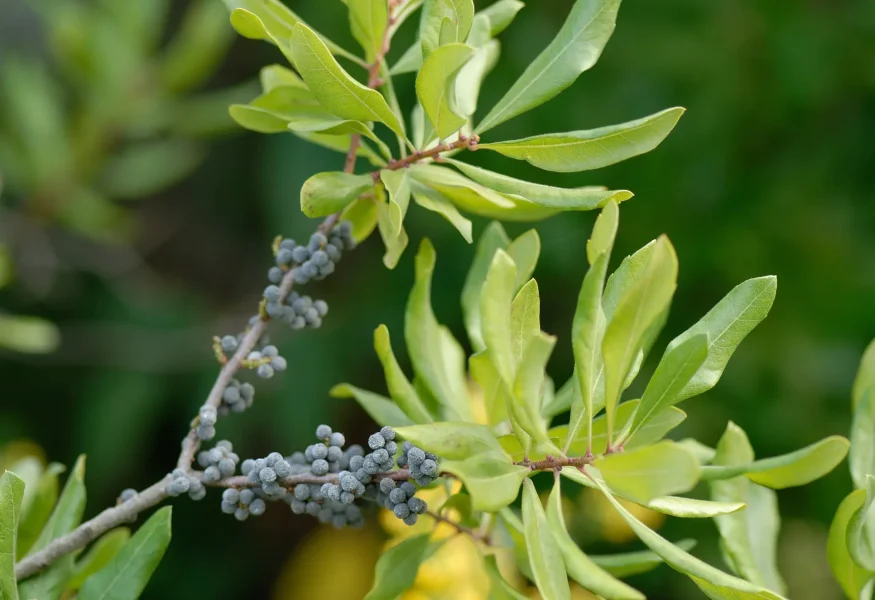
Owen’s Fuss-Free Tip for Planting Edible Natives
Start small and use a simple layering of plants, like planting a fruit tree with native herbaceous plants planted around it that are pollinator-friendly or fix nitrogen in the soil.
Are there common mistakes you see new gardeners make when growing native or edible plants?
I’ve seen new gardeners plant edible species in locations that have too much shade. These species will still survive, but often struggle to produce a lot of fruit. I’ve also seen new gardeners plant wet-loving native species in relatively dry spots. I believe these new gardeners should focus on drought-tolerant plants first.
Native plants for beginners
Owen’s recommendations for easy-to-grow, edible natives
Chives (Allium schoenoprasum); beach plum (Prunus maritima), black currant ‘Consort’ (Ribes nigrum ‘Consort’); creeping thyme (Thymus praecox); persimmon (Diospyros virginiana), and…
For someone walking by the food forest for the first time—what do you hope they notice or take away?
I hope someone passing by the food forest would be able to see the different layers (tree, shrubs, herbs, vines) and notice what makes each layer so amazing and important in our ecosystems. I hope that they could notice those natural layers more frequently in the natural areas they visit.
Thanks Owen for so many inspiring and surprising tips. Any final thoughts or encouragement for people who want to start their own small-scale food forest, at home or in their community?
You don’t need much knowledge to start your own food forest! All it takes is starting small with a fruit tree and pollinator-friendly plants. You will see what works together and what doesn’t, and build on that.
Fruit Patch is a great app developed by Michael Judd, who has spent years growing his own food forest. It gives you combinations of species to plant together.
